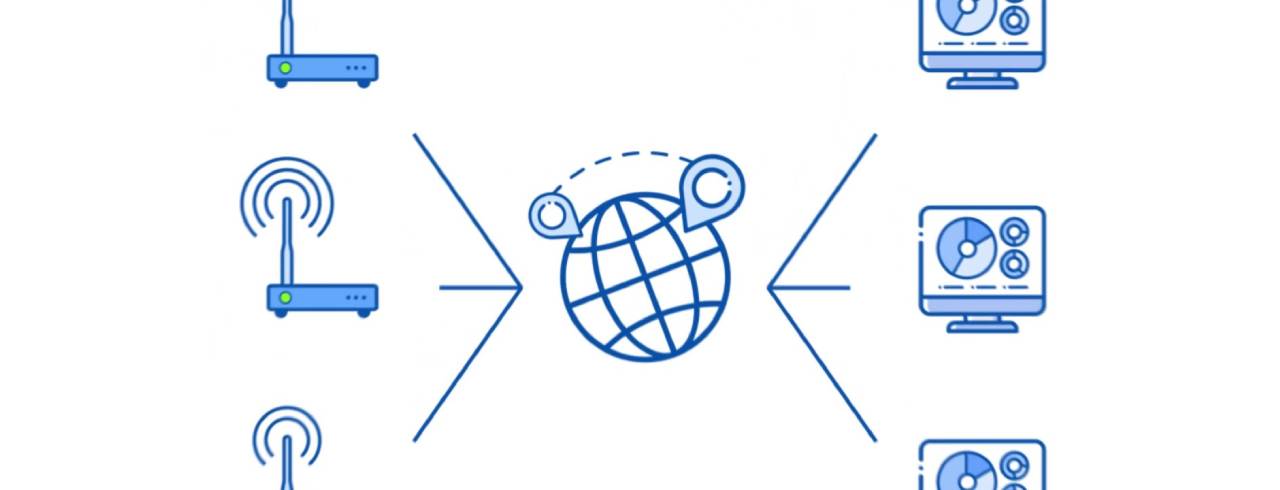LoRaWAN was developed to enable wireless Connectivity for battery-operated devices. The protocol addresses crucial Internet of Things (IoT) needs such as bidirectional communication, end-to-end encryption, mobility, and location services.

LoRaWAN was intended to be used by programs and sensors that frequently need to send and receive a tiny amount of information over vast distances. These networks can be either private (where users manage network components like gateways and servers) or public (reliant on antennas from telecom companies).
Here, we will introduce you to the user's journeys, including both networks, so you can better comprehend this technology and select the LoRaWAN network that best meets your demands.
Telecommunications companies deploy and manage the public or operated LoRaWAN network. For instance, Orange and Objenious in France have launched their LoRaWAN network and offer network access as a membership, just like they do for their mobile phone contracts. As a result, we are in a situation where the network has been set up nationwide for all users, and the user has chosen one or more plans to link its collection of IoT sensors. The user experience on a public network looks like this:
1) Purchase a subscription,
2) Declare the sensors on the operator platform,
3) Activate the sensors,
4) Obtain the data from the operator platform and either transfer it to a data processing platform.
A public network subscription is more appropriate for monitoring a bigger geographic area with fewer sensors. The built-in IoT platform, managed network infrastructure, and roaming services offered by the telecom operator are advantageous to users.
Yet when customers want a higher indoor range, the ability to scale, the ability to employ sensors with reasonable battery usage, and still comply with high-security requirements, private networks may be the best option.
The LoRaWAN network infrastructure enables data interchange between linked devices over vast distances of up to many kilometers. Although connected equipment may transmit a message to a terminal around 1 km away in an urban environment with many obstacles, this distance can be up to 20 km in rural areas.
Perks
• Telecom providers have established nationwide coverage.
• Operator-provided IoT platform.
• Network infrastructure that is operated.
• The potential to use roaming to develop abroad.
Drawbacks
• A business strategy centered on subscriptions that may be pricey as the number of devices increases.
• Reliance on network coverage provided by the operator.
The user can access their network equipment and an array of IoT sensors for the private network. Many businesses interacting with the building's IT infrastructure choose private networks, even though France and other European nations often offer a high-quality public network. The business can connect its internal system to the private network without accessing the Internet.
Users go through the following stages for private networks:
1) Purchase one or more gates as necessary.
2) Place them on the site.
3) List the sensors inside the gateways.
4) Establish the connections between the data processing platform and the gateways.
5) Turn the sensors on.
Private networks should be considered by users who want to manage a building, factory, university, or another type of setting. Dependency on the operator's network coverage can have significant drawbacks, and when there are a lot of sensors deployed, telecom subscriptions can get pricey.
Indeed, with private networks, the company is responsible for setting up the network infrastructure, but this can be economically viable in terms of scalability, for instance, in a building with many connected devices.
The key benefits are data protection since a private network enables a firm to connect its systems to the network without using the Web, as well as reduced acquisition costs because there is no need for a company to pay an operator's subscription fee. In this case, the corporation will have to set up the complete network infrastructure, but if more devices are connected, there may be opportunities for economies of scale.
Perks
• The business owns the network infrastructure.
• Secure network guarding the information moving via it.
• There is no subscription.
• The ability to connect to the business application of the company.
Drawbacks
• High launch-phase infrastructure expenses.
• The price of ongoing maintenance.
• Needs in-house radio engineering and deployment expertise.
With the ability to track the movements of vehicles and devices globally, LoRa technology and its LoRaWAN protocol are expanding globally, revolutionizing some industrial areas like logistics. Private networks operated networks, and specialized networks are still available for selection. To do this, it is required to assess the requirements and associated infrastructure expenses and the viability of handling installation and maintenance internally. We recommend you visit the LoRa Alliance site to learn more about this communication technology.